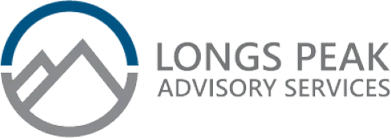
Key Takeaways from the 2024 PMAR Conference
June 7, 2024

We at Longs Peak Advisory Services were thrilled to sponsor and participate in the 22nd Annual Performance Measurement, Attribution & Risk Conference (PMAR™) held on May 22-23, 2024. The event was a fantastic opportunity for us to engage with industry experts and share our insights. We always appreciate how TSG encourages participants to engage with sponsors and if you were there, hope we had a chance to meet you!
If you couldn’t make it this year, here are some of the key takeaways from the event that we found most impactful:
Artificial Intelligence in Performance and Reporting
This year’s event included two powerful sessions on the use of AI in the performance industry. Harald Collet from Alkymi presented a compelling session on the transformative impact of artificial intelligence (AI) in performance measurement and reporting. AI’s capability to process vast amounts of data and generate actionable insights is indeed revolutionizing our field. Collet’s discussion highlighted both the opportunities AI presents, such as enhanced efficiency and accuracy in reporting, and the challenges it brings, including concerns about data integrity and ethics. This session resonated with us as we continually seek to integrate advanced technologies to better serve our clients while carefully managing associated risks.
The application of AI, even on a small scale, can have a profound impact, helping optimize processes, and enhancing customer/employee experience and overall satisfaction. It has the power to enhance productivity and decision-making, making even modest use of this technology extremely valuable. One example provided was how to integrate AI with Excel. It is now possible to augment Excel’s capabilities to automate data entry, cleaning, and formatting, which saves time and reduces human error.
The “human in the loop” (HITL) concept was also discussed which emphasizes the role of human oversight and intervention in AI systems, where AI technologies are guided and corrected by human judgment, particularly in complex or critical tasks where machine errors could have significant consequences. While experts in many fields are often concerned that AI technologies will replace individuals in the workforce, Collet encouraged the crowd with a simple reminder that “You’re not going to lose your job to AI. You’re going to lose your job to someone who is using AI.”
Implementing SEC Guidelines
Our very own partner, Matt Deatherage, CFA, CIPM, had the privilege of moderating a session on the practical implementation of the new SEC guidelines alongside Lance Dial and Thayne Gould. They aimed to provide attendees with a comprehensive overview of these guidelines and share strategies for effective compliance. Now that the guidelines have been in place for over a year, the discussion underscored the importance of understanding regulatory expectations and adapting internal processes accordingly. Some of the key reminders from this session were:
- Most of the time the SEC will likely view Yield as a performance statistic and should therefore be shown net of fees. If the investment firm believes yield is not performance and wants to show it gross, they must be comfortable in defending that stance.
- Attribution analysis is often seen as performance-related information and therefore needs to be net of fees.
- Do not put hypothetical performance on your website! In most scenarios, it is generally not appropriate to present hypothetical performance. This is also a relevant topic in current events, where organizations have been fined for adding hypothetical performance to their website.
- Any sort of statement made in marketing needs to be supported. For example, if a firm claims to be “the best” they need to be able to support that claim – according to what/whom are you the best?
- A MWR (“also known as “IRR”) stream must also be presented with the prescribed time periods, net of fees. As of this publish date, the SEC has not put out any prescribed calculation methodology on how the MWR is to be calculated.
This panel offered actionable insights to help firms navigate the regulatory landscape efficiently and ensure adherence to the latest SEC standards. Reach out if you would like us to connect you with an SEC compliance consultant.
GIPS® OCIO Guidance Statement
One of the standout sessions was the panel discussion on the GIPS® OCIO Guidance Statement, featuring Joshua O’Brien, Todd Juillerat, Amy Harlacher, and G.R. Findlay. This session was invaluable as it delved into the implications of the guidance for firms managing outsourced chief investment officer (OCIO) services. While there is still some gray area around the OCIO guidelines, the panel emphasized the necessity of aligning with global best practices and provided insight into the important considerations to keep in mind for compliance. It reinforced the importance of transparency and consistency in performance measurement, which are core values we uphold at Longs Peak.
GIPS® Compliance Q&A
In another interactive session, Matt Deatherage joined John D. Simpson, John Norwood, and Susan Agbenoto for a Q&A on GIPS® compliance. They addressed a variety of common questions and concerns, providing practical advice for firms striving to adhere to the GIPS® standards. Some of the questions they answered were:
Q: What are some best practices to prepare for a verification?
A: Outlier reviews are extremely important to make sure composite construction is accurate and in line with expectations and your policies and procedures. Performing this type of review can help catch composite construction mistakes that may otherwise delay a verification if found in the testing process. This review is important no matter the approach you take as outliers can be reviewed in a variety of ways.
Never done an outlier review? Fill out this form and put PMAR2024 in the message box — we will test a sample of your composite data and provide you a list of outliers for review.
Q: What should be reviewed annually by a GIPS compliant firm?
A: GIPS policies and procedures. Your policies and procedures are the backbone to your claim of compliance and should be reviewed periodically to ensure they are still up to date. Reviewing this at least annually and documenting any changes will go a long way.
Q: What tips do you have for firms looking to become GIPS compliant or adjust their current compliance program?
A: We have lots of suggestions, but here are two big ones:
- Leverage software as much as possible, whether that be for composite construction or GIPS Report creation. Software can help build efficiencies and remove risk of human error.
- Don’t over-complicate your compliance program or policies and procedures. Make sure your policies and procedures are meaningful, but not so complex that they become difficult to consistently follow and implement.
What resources are available for organizations going through verification (whether it’s their first or 10th)?
A: While it can be helpful to appoint someone internally as the head of your GIPS compliance program to oversee all relevant requirements are being met, depending on the size of your organization, you might need to seek out additional help if you have no one in-house with this knowledge. We have helped over 150 firms become GIPS compliant by serving as their outsourced GIPS experts and would love to support your firm too.
There are also third parties, such as your verifier, that can help answer questions about GIPS verification. The CFA Institute also has a lot of great resources available such as the GIPS help desk (email them at: gips@cfainsitute.org), GIPS handbook and/or the GIPS Q&A Database.
We hope this session was rewarding for participants and left them with clear takeaways for enhancing their GIPS compliance practices.
WiPM Event
For the second year in a row, the Women in Performance Measurement (WiPM) group hosted a meaningful and enlightening day-long event in conjunction with PMAR. With sessions addressing communication in the workplace, ethical considerations in performance, and work-life balance, the conversations and knowledge-sharing did not disappoint.
It was inspiring and encouraging to hear from so many female thought leaders engaged in discussion about how we can further equip the next generation of female leaders in performance measurement. Two key highlights from the women-focused content shared included:
- The importance of creating a “brag book.” Oftentimes as women, it can feel arrogant or uncomfortable to share successes, but it’s important to remember that we can be our biggest advocates when we keep a record of our own accolades and triumphs. While the title of “brag book” could be off-putting, it is intended to simply be a “fact book” of all the accomplishments you’ve had in the workplace.
- Especially for women, work-life balance can feel impossible to achieve, so we explored the idea of “work-life harmony” instead. We discussed how the idea of “work-life balance” always feels like a give and take where one area has to give for the other area to grow – causing women to feel more guilt around the area that is now lacking. When we reframe this topic to be “work-life harmony,” it allows us to think about work and life in tandem – ebbing and flowing with a level of musicality that doesn’t require one to be “less” for the other to be “more”, but rather gives women the ability to recognize how they can be successful in both areas of life as the demands of each shift in different seasons.
While WiPM is still a relatively new organization, the group is excited to continue to offer group and individual programs to aid in the advancement of women in the performance measurement industry. During the event, the group highlighted the existing Mentoring program that matches mentors/mentees together to support one another in their performance-related careers.
Learn more about Women in Performance Measurement here, or join the LinkedIn group.
Conclusion
PMAR™ 2024 was a resounding success, offering a wealth of knowledge and practical insights on the latest advancements and regulatory updates in performance measurement and risk management. Our sponsorship and active participation underscored our commitment to supporting the industry’s growth and evolution. We at Longs Peak are dedicated to advancing best practices and helping our clients navigate the complexities of performance measurement and GIPS compliance. If you have any questions about the 2024 PMAR Conference topics or GIPS and performance in general, please contact us.
We hope to see you at PMAR & WiPM in 2025!

